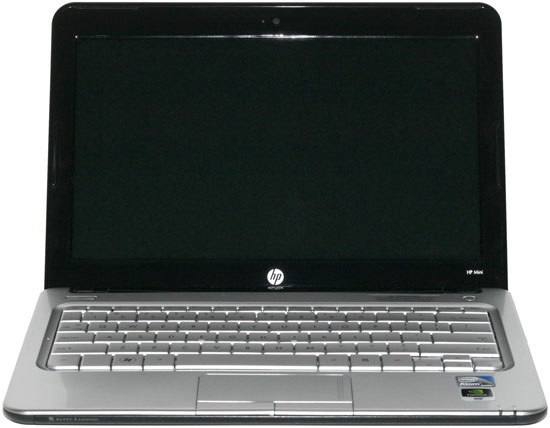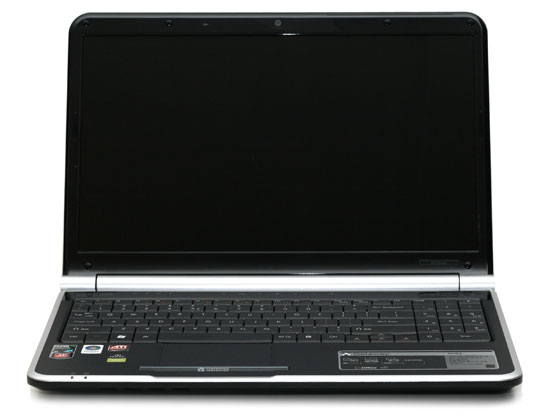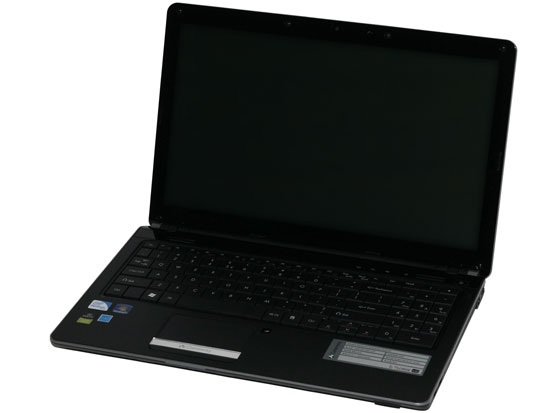Intel Core 2 CULV Roundup: Who Needs Atom?
by Jarred Walton on February 4, 2010 4:00 AM ESTMarket Recap (aka Conclusion Part 1)
We asked at the outset, "Who needs Atom?" It's now time to answer that based on our review today. What we really need to look at are the strengths and weaknesses of the various platforms at the various price categories. We've been over this ground before, but it bears repeating. We'll focus specifically on the entry level laptops and netbooks, with a price ceiling of around $800. Given those parameters, here's how things work out.

Sub-$350 is clearly the domain of the Atom-based netbooks, so it's definitely not dead. You'll sacrifice a lot in terms of performance, and features are also going to get cut. HD video decoding support generally isn't present, but we may see some netbooks start to ship with Broadcom Crystal HD to handle that. Intel also has their GMA 500 IGP that handles H.264 decoding quite well, but there were a lot of other issues with the drivers that made it a less than perfect solution. At present, look for Atom N450 netbooks for around $300 (give or take), and you can expect great battery life and very small form factors. So yes, Atom does have its uses.
$350-$500 is where things start to get messy. Atom netbooks obviously fall into this price range as well, but Microsoft won't let manufacturers ship Windows XP with more than 1GB RAM or a 160GB HDD. That's fine, but now you can get Windows 7 Starter (or even Home Premium in some cases) netbooks with 2GB RAM and larger HDDs. Battery life for such netbooks remains stellar, but the video decoding support is still lacking, barring a separate video decoder chip.

Another option that we encounter in this price range is NVIDIA's ION platform. ION works with the older Atom N270/N280, and battery life isn't as good as the Intel solution. The benefit is that you get full HD video decoding support - including the ability to play Blu-ray movies, assuming you have an external Blu-ray drive. Gaming is theoretically possible, but many games require more CPU power than Atom can deliver. Depending on the netbook features, ION looks to cut battery life by around 25% relative to non-ION N280 netbooks. So you can get better video support and around four hours of HD video playback and six hours of Internet surfing, or you can stick with vanilla Atom and get six hours of 720p (or lower) video playback, no Flash HD support, and up to ten hours of Internet surfing.
Need some more options? There are plenty of choices! CULV makes an entrance at just over $400, with battery life that's a bit better than ION netbooks. You also get 2GB RAM compared to most netbooks that ship with 1GB, and the GS45 chipset is much better than 945GSE so HD video content isn't a problem for the most part. (We're still waiting on full Flash 10.1 video support from Intel's IGPs, though.) Video playback can run for about 4.5 to 5 hours, and Internet battery life can reach seven hours.

If you prefer more performance and don't care as much about battery life, AMD laptops also make an appearance in this price bracket. You can find HP/Compaq and Acer/Gateway laptops with Athlon II M300/M320, 3GB/4GB RAM, and HD 4200 graphics for just under $500. These will typically be 15.6" notebooks rather than smaller form factors, and the size combined with the component choices will deliver battery life of around 2 hours for video, 2.5 hours Internet, or up to 3.5 hours in lighter loads. If you want to drop back to the older Athlon X2 CPUs and HD 3200 graphics, you can even get such laptops for around $400 (i.e. the Gateway NV52 line). We'd recommend against any of the single-core CPU solutions (AMD or Intel), as the lowered performance isn't backed by significantly improved battery life - CULV will do better in our opinion. Still, if you're okay with the compromise, you can find AMD Neo laptops as small as 11.6" with the MV-40 CPU. (Look at the MSI X610 results to see what sort of performance you'll get.)
Need even more choices? Well, they're there. Standard Intel-based (i.e. non-CULV) laptops are also available for just under $500 now, with CPUs like the Pentium T4300. The Gateway NV58 is representative of this class of laptop. Battery life is going to be around 2.5 hours for video, three hours for Internet, and up to 4.5 hours in light workloads. Basically, you'll get about 25% more battery life and 25% more CPU performance than the competing AMD solutions, but gaming isn't at all practical. (It's at least borderline on many games with the HD 3200/4200, with plenty of slightly older titles that run fine.)

At $500-$650 CULV really starts to show up a lot. Now instead of 2GB RAM, you get 4GB and generally larger hard drives. The Pentium SU4100 solutions are typically the best bang for the buck, with Core 2 Duo SU7300 usually adding $75 and only a small (5% or less) performance increase. SU7300 does add VT-x support, though, if you feel that's important. For battery life without compromising too much on performance, we feel CULV is an excellent choice. Laptops like the models we reviewed today would work great for college students, allowing you the freedom to work on papers and take notes all day at campus without the need to use an AC adapter. You can do the same with Atom, but these are faster and generally more capable. You still have to give up gaming performance, though - you'll need a discrete GPU with CULV if that's what you're after.
If you don't care about battery life and you want gaming performance, you can also turn to regular AMD and Intel laptops with GPUs like the Mobility Radeon HD 4330 or GeForce G210M (or 8200M/9300M). Another option is the new Core i3 laptops, with prices starting at around $600 for the i3-330M complete with 4GB DDR3, 320GB HDD, and the improved Intel HD Graphics. And from here the options begin to open up rapidly. As we've discussed already, the only thing you really need for CULV to handle games is a more capable GPU, and the ASUS UL line provides that as well as switchable graphics, giving you the best of both worlds. The smaller models cost a bit more, but the UL50Vt is currently selling for as little as $700. Don't like NVIDIA's GeForce line but still want CULV? Try the Lenovo U450P 33892GU for $800 (but we'd stick with the ASUS UL50Vt or UL80Vt).










62 Comments
View All Comments
diego10arg - Monday, March 15, 2010 - link
Hi all,I am trying to upgrade my Atom 270N netbook and my primary and only concern is FullHD Playback through HDMI. I will be using an external harddrive for backup and storage purposes, so HD does not matter.
After looking for a while I found several laptops with Celeron ULV 723, Athlon Neo MV-40, SU4100 and SU7300.
So far I got this prices (I live in Argentina, prices are in USD)
. MSI Wind 210-050AR, Athlon Neo MV-40, 2GB RAM, HD250Gb > 609 USD
. MSI X340-241AR, Celeron ULV 723 1.2Ghz, 2GB RAM, HD320Gb > 699 USD
. Dell Inspiron 11z, ULV SU4100, 2Gb RAM, HD160Gb > 709 USD
. ASUS AU UL30A-QX050D, ULV SU7300, 4Gb RAM, HD320GB > 915 USD
What differences are between CULV 723 and SU4100?
What would you buy? Why?
Thanks all!
Regards,
DiEGO
Daeros - Monday, March 1, 2010 - link
Any word on how something like the 1201n will perform with the new GPU-accelerated versions of Firefox and IE? I feel the current-gen Intel graphics are just unacceptable, so the Ion and AMD laptops are more attractive, but I don't want to feel like I'm trapped in molasses when I browse the interwebs.fwacct4 - Monday, February 15, 2010 - link
I would like to see noise levels tested for laptops. The thing with desktops is that you can actually hide them some place where noise doesn't bother people, but laptops are always right in front of you, and some laptops have a very annoying high-pitch noise that is noticeable because they are so close to the user.I'm sure there are a lot of people interested in having quiet laptops, so I hope that noise level can be compared among laptops as well, and especially with CULV processors which are low voltage, there is an opportunity to present a particular model as being particularly quiet, which would really be a selling point for some.
JarredWalton - Tuesday, February 16, 2010 - link
All of the CULV laptops tend to run very quiet, to the point where my SPL meter has trouble detecting the noise level over the background noise in the room (around 30dB). Even under a heavy stress test like CINEBENCH, the fans rarely reach a level that I would consider distracting (so typically under 35dB). When you're not running a stress test, the fans are often stopped. Out of the three, the Gateway EC5409u seems to be a bit quieter, likely because it's larger and has even more room inside to dissipate heat, but the others weren't loud by any stretch.viewwin - Tuesday, February 9, 2010 - link
I would like to see the next version of Ion mixed with a CULV CPU for a decently powerful HTPC.acron1 - Tuesday, February 9, 2010 - link
A couple of weeks ago I was looking to replace my Toshiba NB205 with something small but with a bit more punch. I ended up with the Toshiba Satellite T115D-S1125 primarily because of the HD3200 graphics. I knew that in terms of battery life the Intel based solutions are better choices but I wanted the extra graphics power available from ATI. Battery life while browsing the web, some flash and email is just over 5 hours...Hrel - Saturday, February 6, 2010 - link
I'm still waiting for a CULV laptop with a screen of AT LEAST 1600x900 and a dedicated GPU that's about equivalent to the GT240 from Nvidia; I'd prefer it be from Nvidia but since I want DX11 AMD will do fine; the 5series really steps it up. Asus has what I agree is the best CULV laptop, I just want the CPU overclocked to 2GHz, a screen with a resolution of 1600x900 and a GPU about as powerful as a GT240 for 1000 bucks or less. That's totally reasonable. And I want it NOW! 15" chassis too, btw.Schugy - Friday, February 5, 2010 - link
I don't think that I care about the time I can wait in front of my Netbook but I need to know whether the battery can encode xxx thousand frames to complete the task.JarredWalton - Friday, February 5, 2010 - link
In that case, FPS is a more useful figure than the time taken, since you don't know how many frames are in the video we choose to test. (For reference, we use a 1080p MPEG2 video for the DivX test with 719 frames.) You would also need to know how long the battery lasts under a heavier CPU load, which I haven't shown here. If you look at the "100% CPU power draw" figure and divide the battery capacity by that amount, you can get an estimate... but the power settings will definitely come into play.Let's see if I can help: a 90 minute DVD as an example encoded into DivX would require the encoding of approximately 162000 frames. Now our test results show 5.14 FPS, but that's a far more complex 1080p encode. DVD quality should be a lot faster. A quick test of a 3978 frame chapter of a DVD yields an encode rate of 43.71 FPS (91.0 seconds) on the Gateway EC5409u. That means for a 90 minute 30 FPS DVD (like my test video), you'd need at least 61.77 minutes of battery life. I don't even need to run a test to say that it wouldn't be a problem for CULV on that sort of encode. Atom N450 would still take about 40~50% longer, but again that's not a problem.
Then again, the default settings result in a low quality encode. If you do a 2-pass DivX encode targeting better quality, total time required increases over two-fold. I just tried it out and the EC5409u managed to encode the same 3987 frame DVD chapter in 237s, or 16.83 FPS. That means roughly 2.7 hours for a 90 minute DVD, or over 3.5 hours for a two hour DVD encode. If that's what you're trying to do, it's unlikely you'll manage the entire encode while on battery.
buzznut - Thursday, February 4, 2010 - link
I have the 8200M chipset, I really wouldn't recommend it for gaming. As the article suggests, a discrete graphics option would be better. I think the chipsets that allow the discrete card to turn off when not needed to save battery life are the best options.My laptop has a 2.1 Ghz dual core and 4 gigs of ram, with 4 gigs ready boost. It can't game very well, its heavy and the battery life is atrocious. It gets quite hot while watching video, probably the cpu while using flash, and struggles with hidef.
Given today's options, I would not have gone with the notebook I currently have, as it is too big to carry with the addition of my enormous and heavy chem and bio books. Why drag it along when the battery will die after 2 hours? Most days it sits on a bed side table. I think I would go for a culv with the switchable chipset I mentioned. I am quite jealous of my wife's netbook and 8 hour battery life.
Nice article, it would be nice to visit again in 6 months to see how the mobile market changes.